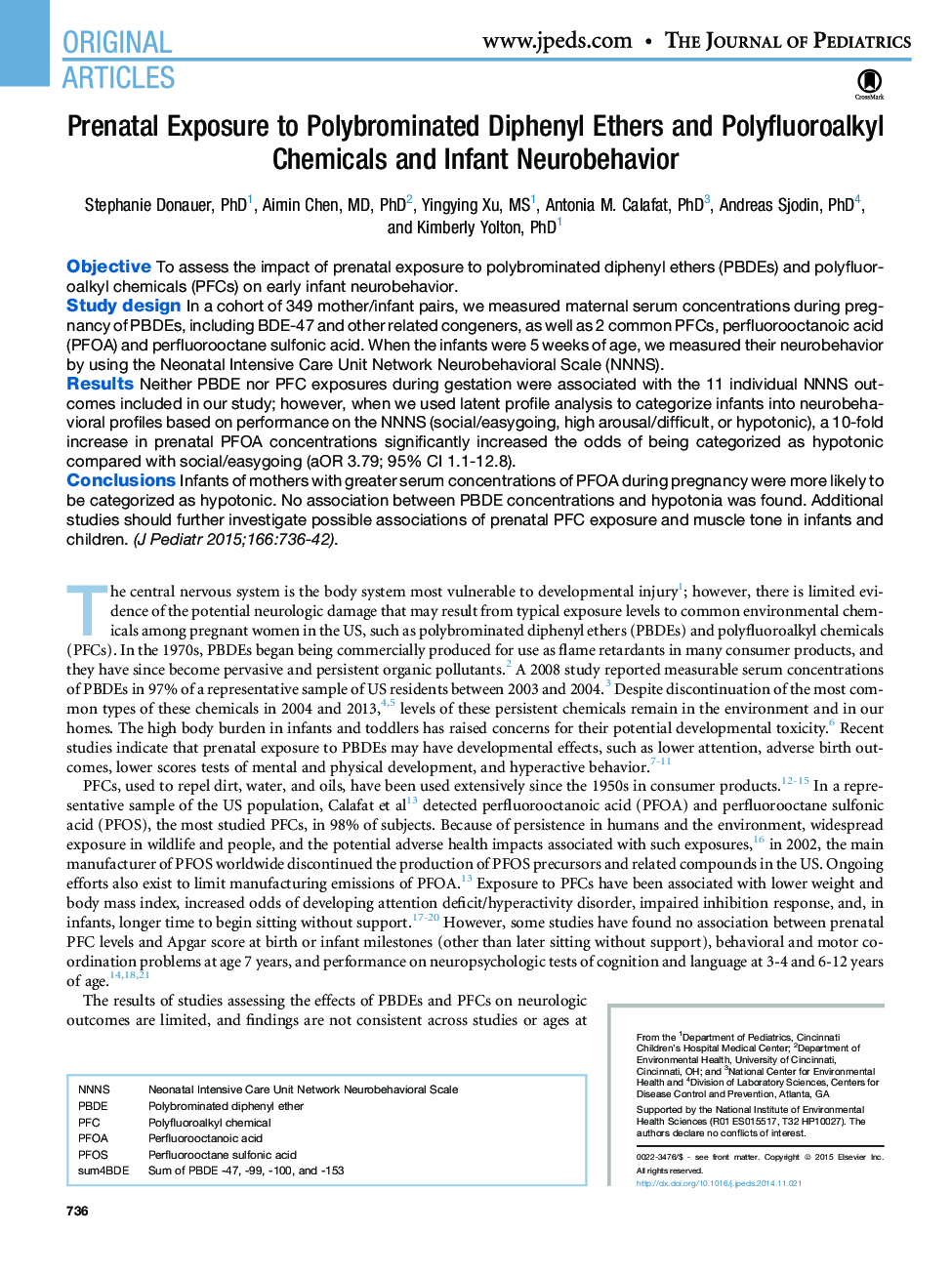| Article ID | Journal | Published Year | Pages | File Type |
|---|---|---|---|---|
| 6221353 | The Journal of Pediatrics | 2015 | 7 Pages |
ObjectiveTo assess the impact of prenatal exposure to polybrominated diphenyl ethers (PBDEs) and polyfluoroalkyl chemicals (PFCs) on early infant neurobehavior.Study designIn a cohort of 349 mother/infant pairs, we measured maternal serum concentrations during pregnancy of PBDEs, including BDE-47 and other related congeners, as well as 2 common PFCs, perfluorooctanoic acid (PFOA) and perfluorooctane sulfonic acid. When the infants were 5Â weeks of age, we measured their neurobehavior by using the Neonatal Intensive Care Unit Network Neurobehavioral Scale (NNNS).ResultsNeither PBDE nor PFC exposures during gestation were associated with the 11 individual NNNS outcomes included in our study; however, when we used latent profile analysis to categorize infants into neurobehavioral profiles based on performance on the NNNS (social/easygoing, high arousal/difficult, or hypotonic), a 10-fold increase in prenatal PFOA concentrations significantly increased the odds of being categorized as hypotonic compared with social/easygoing (aOR 3.79; 95% CI 1.1-12.8).ConclusionsInfants of mothers with greater serum concentrations of PFOA during pregnancy were more likely to be categorized as hypotonic. No association between PBDE concentrations and hypotonia was found. Additional studies should further investigate possible associations of prenatal PFC exposure and muscle tone in infants and children.
